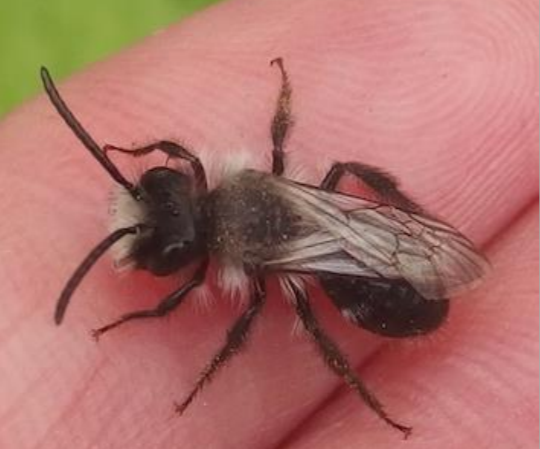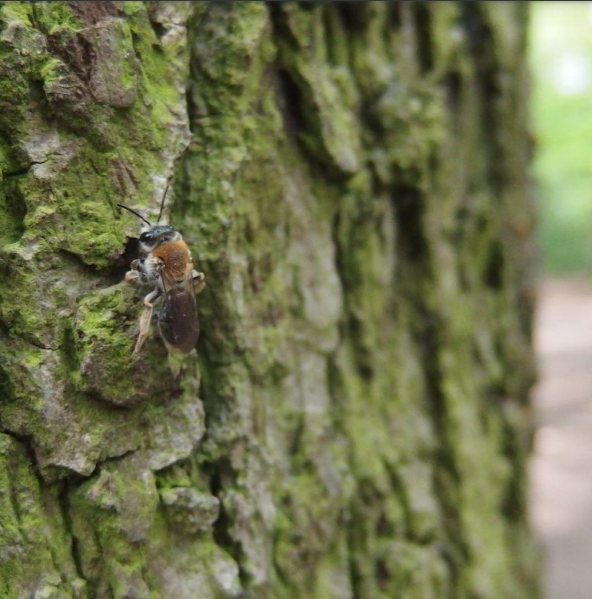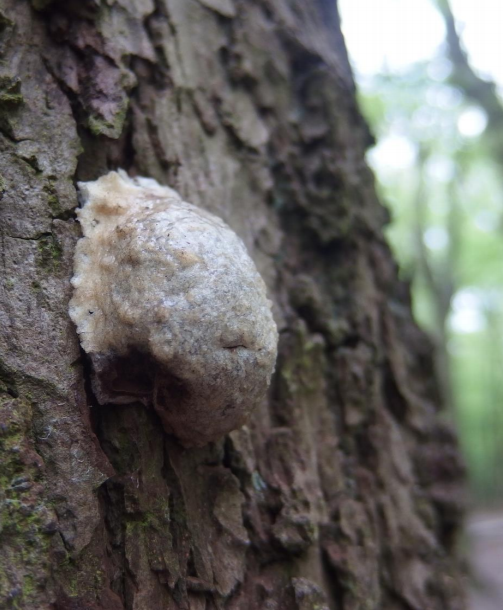Spring in Highgate Wood
In this issue of Field Notes, Assistant Ranger Jo explores the spring wonders of Highgate Wood during the first lockdown in April.
Highgate Wood is pretty special. At 70 acres, it is the largest of four fragments of ancient woodland in the borough of Haringey that once formed part of the ancient Forest of Middlesex, and later the Bishop of London’s private estate. Its importance to wildlife is demonstrated by the rich diversity of species that have been recorded here (more than 900 invertebrates, 338 moths, 353 fungi, 70 bird, and 7 bat species), many of which are protected and have UK BAP priority species status, and rely on niche habitats found only in ancient woodlands.
One such species is the endearing ashy-mining bee (Adrena cineraria), which lives in burrows in the sun-drenched sandy banks at the edge of the sports field. This small spring-flying solitary bee is easily recognised by its black and grey coloration. An important pollinator of fruit trees, I found this tufty-faced chap amongst an impressive display of garlic mustard growing beneath wild cherry trees in blossom. When I tried to get a close-up photo, he decided to play dead.
Making my way towards the bluebell conservation area near the Bridge Gate entrance to the Wood, I spot a female orange-tailed mining bee (Andrena haemorrhoa) slowly climbing the trunk of an old oak, left. Intrigued by its behaviour, I soon discover the telltale mining bee holes at my feet and realise she must be newly emerged from her burrow.
Male Ashy mining bee
Orange-tailed mining bee
The neighbouring tree, however, dishes up something much more arcane – a slime mould. Once thought to belong to the fungi family, these strange organisms are classed as a type of amoeba. When food is scarce, many of these single celled decomposers will group together and move (yes, they move!) as a single body. This one had formed a ‘crust’ to protect it from drying out. When pressed lightly, it felt weirdly spongy. I have to say, I wouldn’t want one as a pet
A slime mould Enteridium lycoperdon
Continuing my walk (or slalom, on account of the crowds of ‘locals in lockdown’ who appear to be struggling with the concept of social distancing), a sparrowhawk lands in the canopy of trees above my head, close to the conservation area where a pair nested last year (fingers crossed they succeed again this year).
Approaching the bluebell walk, I can see volunteer efforts to reduce the amount of ivy, holly and brambles to open up the ground for our native bluebells is bearing fruit. The blanket of blue - (and white -) bells is at its peak -best, buzzing with bumblebees and putting on a display we can all be proud of.
In 1916, the London Natural History Society reported that bluebell and wood anemone were almost non-existent in Highgate Wood. What a difference some sympathetic woodland management can make…
Venturing ‘off-piste’, I try to make out the birdsong above the noise of screaming children and loud music (this is not the peaceful Highgate Wood I’m accustomed to). Watching a trio of blackbirds collecting nesting material and sifting through the leaf -litter in search of juicy grubs and worms , I listen carefully: chiffchaff, blackcap, robins, wrens, great tits, blue tits, nuthatch, wood pigeon, ring -necked parakeets, green woodpecker (which appear to be nesting in the same area as last year) and the drumming of great spotted woodpecker can all be heard.
More than 50 different species of trees and shrubs grow in the Wood, including oak and the rare wild service tree (an indicator of ancient woodland). The dominant species, however, is hornbeam, which look absolutely stunning at this time of year. With their unfurling vivid green leaves appearing to light up the whole of this most enchanting wood, a spring visit is essential.




